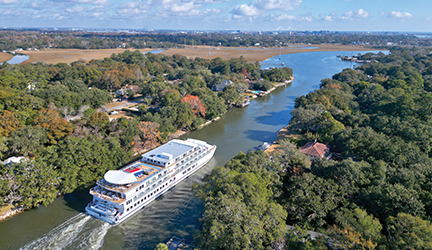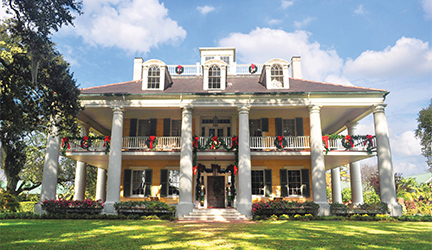American Cruise Lines proudly waves the nation’s flag on each of our vessels to show we are truly American. Our ships are built, staffed, and sailed exclusively in the U.S.A. It’s what makes us a one-of-a-kind cruising experience. The American flag, which we celebrate today, represents the life, liberty, and pursuit of happiness our founding fathers built this country on. The fifty stars and thirteen stripes we’ve come to know as a symbol of these virtues went through many drafts and have a story that winds like the Mississippi River.
The Origins of the American Flag
The journey of the American flag began on June 14, 1777, when the Continental Congress passed a resolution stating that the flag of the United States should have thirteen stripes, alternating red and white, and thirteen stars on a blue field, representing a new constellation. This design, attributed to Francis Hopkinson, a New Jersey delegate and a signer of the Declaration of Independence, was the first official flag of the United States. However, the story of its creation is shrouded in folklore and myth.
One of the most notable origins of the flag involves the iconic Betsy Ross, a Philadelphia seamstress whose story is as colorful as the flag she is said to have sewn. According to legend, none other than George Washington himself approached Betsy with the monumental task of creating the first American flag. It’s a story that paints a picture of patriotism: Washington, with his vision for a new nation, and Ross, with her needle and thread, coming together in a humble workshop to craft a symbol that would inspire generations. Betsy Ross is said to have suggested the use of five-pointed stars instead of six-pointed ones, as they were easier to sew, and this suggestion was adopted in the final design.
The Flag's Inspiration and Evolution
As the United States expanded, the flag evolved to reflect the growing nation. In 1795, after the admission of Vermont and Kentucky to the Union, Congress passed an act adding two stars and two stripes to the flag, making a total of fifteen. This version of the flag, known as the "Star-Spangled Banner," flew over Fort McHenry during the War of 1812 and inspired Francis Scott Key to write the poem that would become the national anthem which we now belt from the stands of all major sporting events.
However, with new states came a need for a redesign and the flag’s design became unwieldy. In 1818, Congress passed a new resolution restoring the flag to its original thirteen stripes and adding a star for each new state. Trying to squeeze more stars into the blue field proved difficult, which is why it took 27 tries just to get it right. Since 1960, the flag has grown to include fifty stars in perfect rows, representing the fifty states, while the thirteen stripes continue to honor the original thirteen colonies.
What it Means to Display the Stars and Stripes
Throughout American history, the flag has been a powerful symbol of unity and resilience. It was raised by soldiers on the battlefield, planted on the moon and waved by citizens during moments of national pride and sorrow.
Today, the American flag is more than just a piece of fabric. It embodies the spirit of a nation built on ideals of freedom and democracy. Whether it’s flying in your yard, home or one of our American Cruise Lines ships, it serves as a reminder of the values we hold dear, and the sacrifices made to uphold them.
As you sail with us along America’s rivers and coastlines, take a moment to reflect on the flag’s rich history and what it represents. Each wave of the stars and stripes is a tribute to the past, a celebration of the present, and a promise for the future. Our flag’s journey, much like our own, is a testament to the pioneering spirit of America, a land where dreams are born and freedom reigns.


